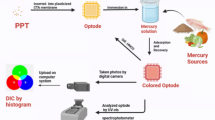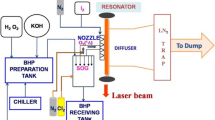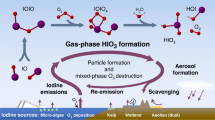Abstract
SOME experiments with gas discharges in pure iodine, pure mercury and mercury-rare gas mixtures have led to the discovery of four new optical maser transitions in the near infra-red.
This is a preview of subscription content, access via your institution
Access options
Subscribe to this journal
Receive 51 print issues and online access
$199.00 per year
only $3.90 per issue
Buy this article
- Purchase on SpringerLink
- Instant access to full article PDF
Prices may be subject to local taxes which are calculated during checkout
Similar content being viewed by others
References
Javan, A., Phys. Rev. Letters, 3, 87 (1959).
Bennet, jun., W. R., Applied Optics Maser, Supp. 1, 24 (1962).
Javan, A., Bennett, jun., W. R., and Herriott, D. R., Phys. Rev. Letters, 6, 106 (1961).
White, A. D., and Rigden, J. D., Proc. Inst. Rad. Eng., 50, 1697 (1962).
See, for example, McDonald, A. D., and Brown, S. C., Phys. Rev., 76, 1634 (1949), and Francis, G., Handbuch der Physik, 22 (Springer Verlag, Berlin, 1956).
Moore, C., Atomic Energy Levels (U.S. Government Printing Office, Washington 25, D.C., 1949).
Author information
Authors and Affiliations
Rights and permissions
About this article
Cite this article
RIGDEN, J., WHITE, A. Optical Maser Action in Iodine and Mercury Discharges. Nature 198, 774 (1963). https://doi.org/10.1038/198774a0
Issue date:
DOI: https://doi.org/10.1038/198774a0



